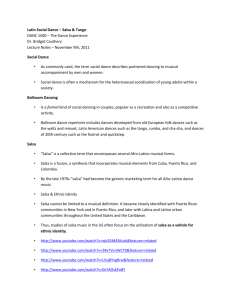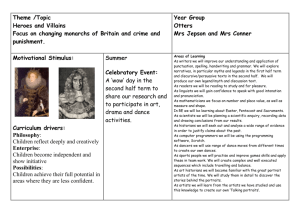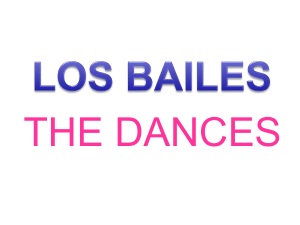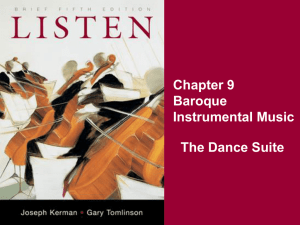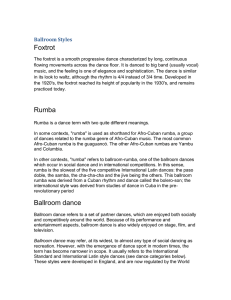The Baroque Suite
advertisement
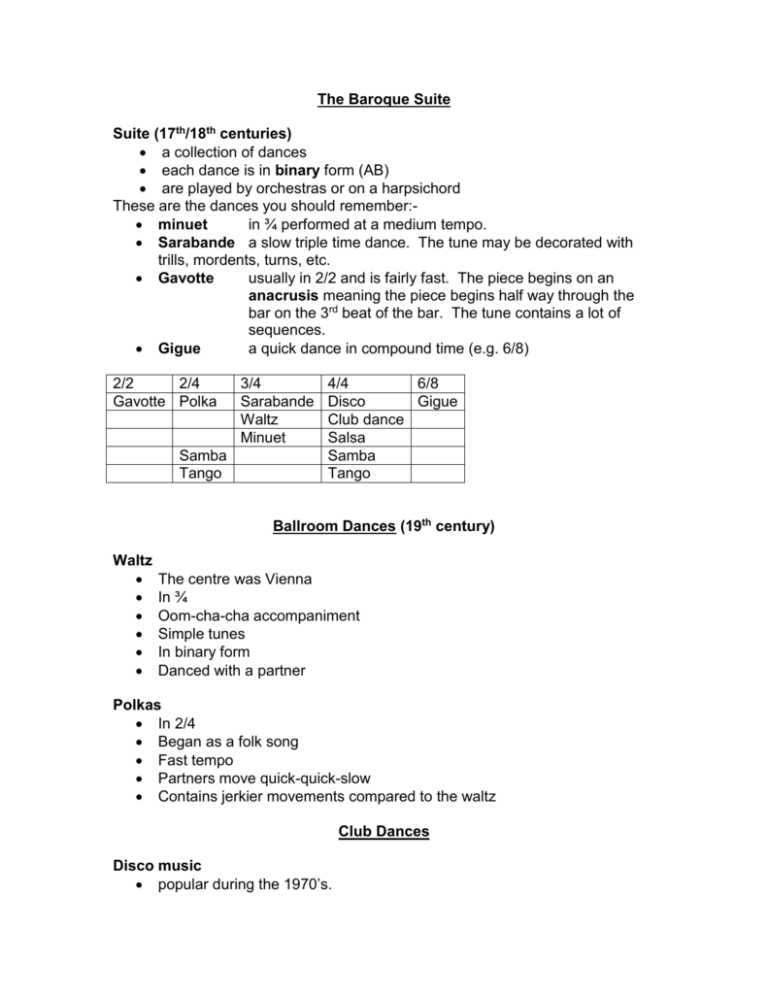
The Baroque Suite Suite (17th/18th centuries) a collection of dances each dance is in binary form (AB) are played by orchestras or on a harpsichord These are the dances you should remember: minuet in ¾ performed at a medium tempo. Sarabande a slow triple time dance. The tune may be decorated with trills, mordents, turns, etc. Gavotte usually in 2/2 and is fairly fast. The piece begins on an anacrusis meaning the piece begins half way through the bar on the 3rd beat of the bar. The tune contains a lot of sequences. Gigue a quick dance in compound time (e.g. 6/8) 2/2 2/4 Gavotte Polka Samba Tango 3/4 Sarabande Waltz Minuet 4/4 6/8 Disco Gigue Club dance Salsa Samba Tango Ballroom Dances (19th century) Waltz The centre was Vienna In ¾ Oom-cha-cha accompaniment Simple tunes In binary form Danced with a partner Polkas In 2/4 Began as a folk song Fast tempo Partners move quick-quick-slow Contains jerkier movements compared to the waltz Club Dances Disco music popular during the 1970’s. Rap in 4/4 120 beats per minute Began in Jamaica in the 1960’s Backing tracks created by remixing Lyrics often about drugs, racism Club Dance It has many styles, such as: Techno tempo between 130-150 beats per minute. No live sounds Jungle about 170 beats per minute. Drum based with many fast notes called ‘break beats’ which give a disjointed feel. Drum ‘n’ bass fusion (mix) of club dance with jazz and funk Trance repetitive Many techniques are used such as mixing, scratching, sampling, looping, sequencing and remixing. Dances of the Americas Salsa The Spanish colonised Cuba and brought African slaves to work. Over many years the two cultures combined to create a dance style called son. The main features of son are: A repeated rhythm called a clave Syncopated rhythms Call and response between the solo and chorus Simple harmonies Salsa is a combination of son and big band jazz, developed in the 1930’s. in salsa you have: 3 sections – the verse, chorus and section between the verse and chorus known as mambo. These 3 sections can be played more than once and can appear in any order. Samba It is a street carnival dance from Brasil In 2/4 or 4/4 Major key Saxophones/keyboards/trumpets/percussion used The beat is played by surdo drums. Over this main beat there are syncopated rhythms played by instruments such as the agogo bells. The music is led by a whistle, setting the tempo and signals call and response sections Tango Originates from Argentina Danced as a couple In 2/4 or 4/4 Music played by violins, piano, double bass or accordion (known as bandoneon) 17th/18th centuries 19th century Minuet Waltz Sarabande Polka Gavotte Gigue 20th century Disco Rap Club dance Tango Samba Salsa

